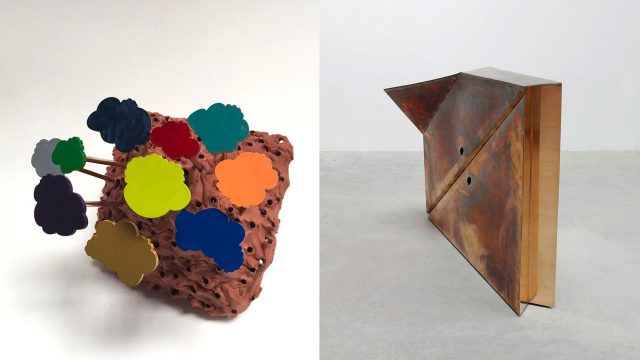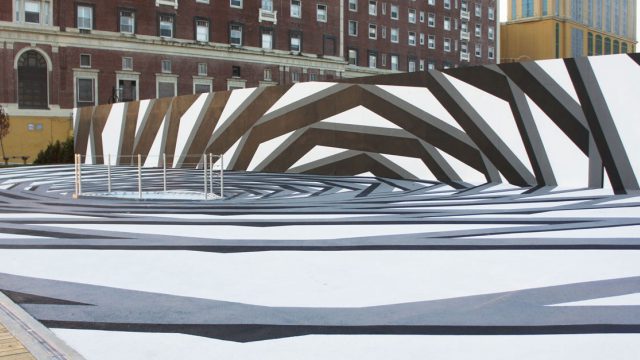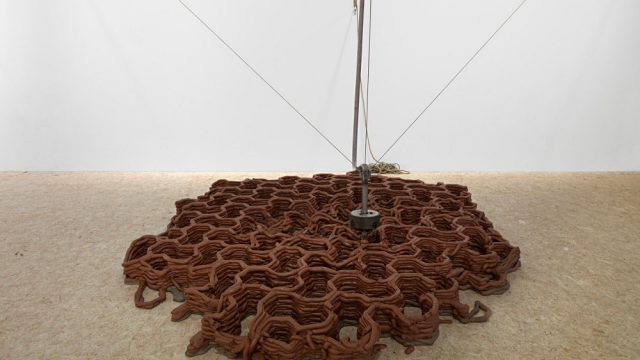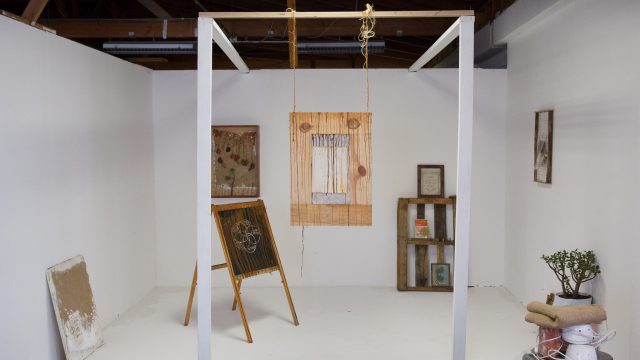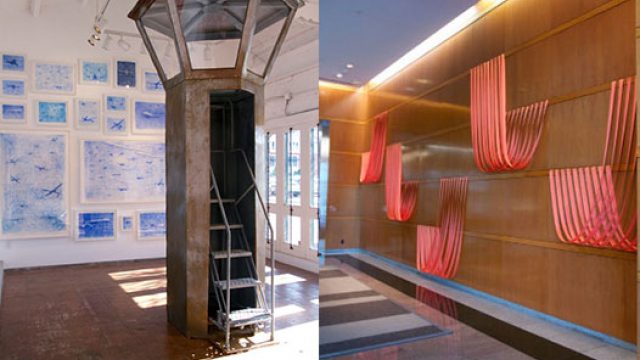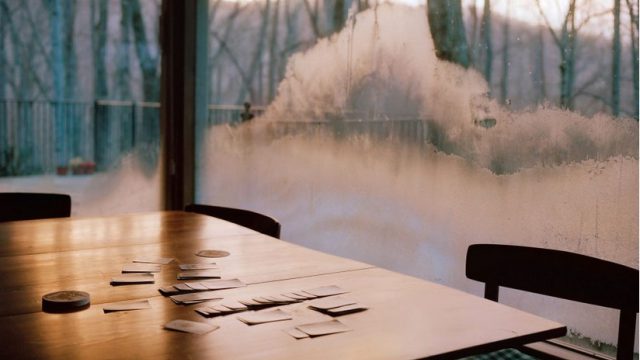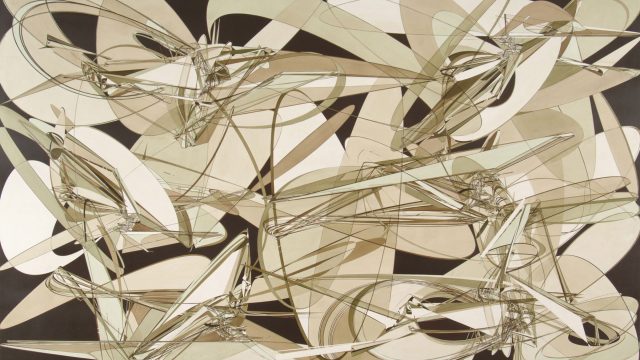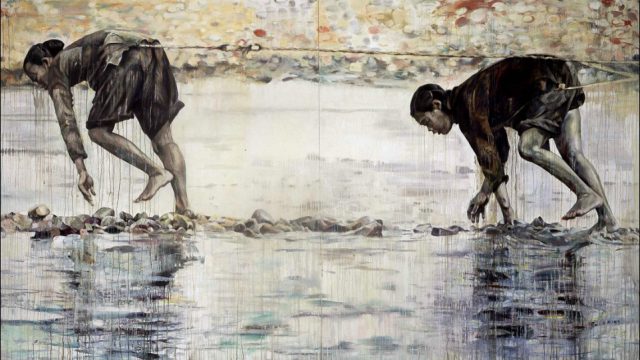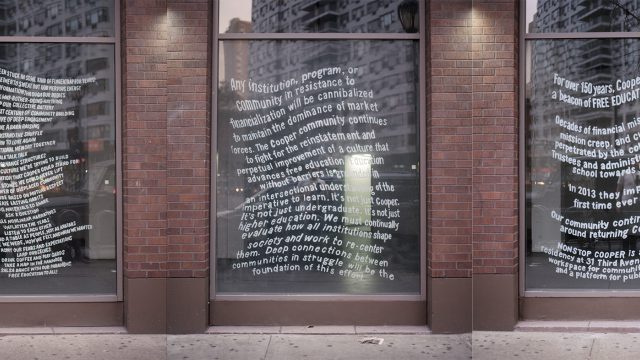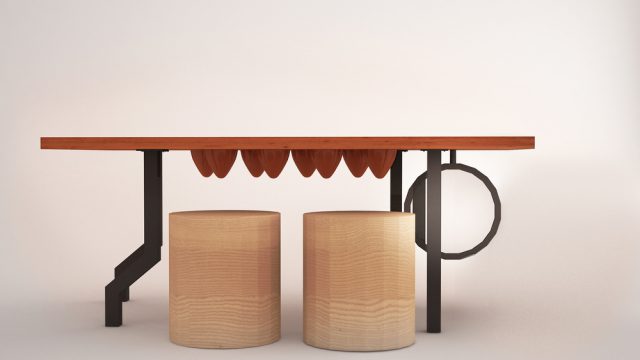Lecture: Tuesday, March 21, 2017 7:00 – 8:30pm
Location: The CIA at Copia Theater, 500 First Street, Napa, CA
Stephen Whisler
My current art practice consists of sculpture, drawings, performances and guerilla art actions. Investigating surveillance and military power has been the main focus of many of my recent projects. In my works on paper, watchtowers, military drones, atom bombs and rockets are drawn as iconic forms in large pastel renderings. My drone series depicts military drones as singular objects and in large groups, always drawn with fingerprints covering the surface.
My most recent preoccupation has been with atomic weapons. Intensely rendered with vermillion pastel fingerprints, these weapons have a sinister feeling. Ultimately the final image is composed of thousands of fingerprints, like thousands of bits of evidence.
Using photographs downloaded from the Internet as source material, I compose the drawings in Illustrator on my computer and print the images in large scale on typing paper with the pages tiled in a grid. The pages are then taped together and given a coat of pastel on the back, which is then used like carbon paper to transfer the image to the drawing paper. The drawings start as digital photographs on the computer and are then fleshed out with the most ancient "digital" technique, the fingerprint.
The sculptural works often have an interactive component, as in Observer, a surveillance tower sculpture based on prison watchtowers. When the viewer climbs into the tower, they become the watcher, making the viewer complicit in the act of surveillance. Walking the Bomb is a performance with a sculpture. Dressed in a dark grey suit with a white shirt, a kind of contemporary version of Buster Keaton's everyman, I walk the streets towing The Bomb. It is essentially an absurdist gesture, but one that points to the daily threat caused by nuclear bombs and bombs of all kinds. We are all towing our own bombs, every day, without realizing it, in our own Theater of the Absurd. We are all complicit in the creation of these objects of destruction: Creation and destruction made manifest in one object.
stephenwhisler.net
Sabine Reckewell
Since 2010 I have built two- and three-dimensional room-sized installations. I am interested in placing artwork in a given architectural context, and I am using linear materials, repetition and geometry to create actual or illusional volumes. I think of them as three-dimensional drawings.
From a distance these installations appear as distinct shapes. Up close they dissolve into linear patterns that shift and change as the viewer's position shifts. Shadows from light sources can create additional visual patterns.
My process is very straightforward and I am only using very simple tools and techniques. These installations look precise, but also have a deliberate hand-made quality to them.
My first consideration is the space I have to work with and how I can take advantage of its dimensions and specific properties, walls, floor, ceiling, lighting, etc.
The second consideration is a concept for the placement of the lines. I have been exploring simple geometric shapes. Angles, triangles, curves, and straight lines are mapped out, and the linear materials are stretched across space from repetitious, evenly spaced corresponding points. Repetition gives the work a meditative quality.
Finally, the materials I choose are crucial. I have been using soft and pliable linear materials of varying widths such as yarns ribbons, ropes and webbing. These are nailed or otherwise affixed to the walls, suspended, or tied to metal channels. It's the materials that give these installations their personality.
My installations usually are not meant to be permanent, movable sculptures. Drawings and notes allow me to recreate some of them in similar spaces. But most of them are site specific. They exist in a particular space for a limited amount of time and then get rolled up and put away.
sabinereckewell.com

